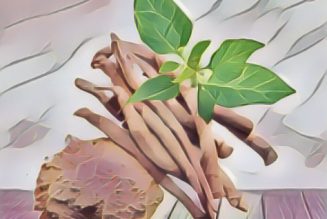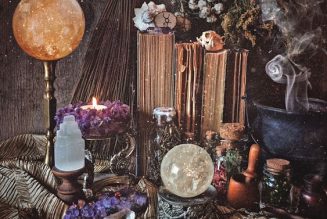Avalon, where the dying King Arthur found rest at the end of his epic story, has been identified with the present-day Glastonbury.
Many legends cling to this ancient place, among the green hills of Somerset.
Even today it is a land of enchantment.
Rumours of witchcraft meetings at midnight on Glastonbury Tor have been current for many years.
This was mentioned in Focus on the Unknown, by Alfred Gordon Bennett (Riders, London, Nineteen Fifty Three).
Today, a number of occult societies, quite unconnected with the witch cult, regard the Tor as an ancient sacred place, and occasionally meet there.
Glastonbury is sacred to both pagan and Christian.
An old poem called the “Prophecy of Melkin, or Maelgwyn”, tells us that Aval on was the great burial-place of pagans, before Joseph of Arimathea came there and founded the first British Church of Celtic Christianity.
Glastonbury Tor was the haunt of Gwyn ap Nudd, the King of the Fairies and an ancient Celtic God of the Dead.
Gwyn ap Nudd survives to this day as the Wild Huntsman, who rides on dark windy nights over the hills of Wales and the West Country. (The Saxons called him Woden.)
The presence of the pagan powers is the reason for the church which was built on the summit of the Tor, and dedicated to St. Michael.
It was an attempt to counteract their lingering and insidious influence.
Some years ago, most of this church was destroyed by a landslide, and today only the tower remains, a conspicuous and dramatic landmark on the Glastonbury scene.
Archaeologists are interested in the curiously terraced appearance of the Tor. It has been suggested that this is the remains of a processional
way, by which pilgrims climbed the Tor in a spiral or maze-like ascent, as a ritual of spiritual cleansing and purification.
Chalice Well, at the foot of the Tor, is built inside with massive stones, which the late Sir Flinders Petrie believed to be Neolithic, and fitted
together in a way that reminded him of the stones of the Pyramids. Its water has for many years been credited with super-normal properties
of healing.
Another local tradition declares that there is a secret cave within the Tor, which long ago was a shrine or sanctuary of some kind.
The names of Chalice Well, and nearby Chalice Hill, recall the association of Glastonbury with the mystical stories of the Holy Grail, which is said to be buried somewhere in the locality.
However, some of the oldest Grail legends make it clear that the Grail was not always a chalice.
This was only one of its forms; and it has a good deal in common with the Sacred Cauldron of Cerridwen, the goddess of Nature, of the moon, and of poetry, who was invoked by the Druids.
The cauldron so frequently associated with witches as one of their ritual objects, is really another version of the miraculous Cauldron of
Cerridwen, as Lewis Spence has pointed out in his book The Mysteries of Britain (Riders, London, Nineteen Twenty Eight).
It may be a surprising and even shocking thought to some, that the Holy Grail and the cauldron of the witches have a common origin in ancient Nature worship, but the evidence is strongly indicative of this.
The name of Avalon means ‘The Place of Apples’.
Somerset is still the county “where the cider apples grow” ; and real old-fashioned Somerset cider is a very potent drink indeed.
It may well have been associated in the past with orgiastic rituals in honour of the pagan gods.
Apple trees have been growing in Britain since very early times.
According to Stuart Piggott’s Ancient Europe, apples were being cultivated in Britain around Three Thousand B.C.
The tree or plant which gives an inebriating, and therefore magical product, has always been regarded as sacred and magical itself. To this
day, in the West Country, some people regard strong cider as a witches’ brew.
There is another reason for the fruit of the apple tree being regarded as sacred. It has the magical symbol of the pentagram, or five-pointed star, naturally imprinted within it. If one slices an apple across, the shape made by its core is a five-pointed star.
In witchcraft rituals today, the priestess stands with feet together and arms crossed upon her breast, representing the skull and crossbones,
the sign of the God of Death and the Beyond
. Then she opens her arms, and stands with arms outstretched and feet apart, representing the pentagram, the sign of the Goddess of Life and Rebirth.
The pagans believed in reincarnation ; and so Avalon, the Place of Apples, was the place of death and rebirth.
This is borne out by the inscription said to have been placed upon the tomb of King Arthur : “Hicjacet Arthurus, rex quondam, rex que futurus (“Here lies Arthur, the once and future King”)






















